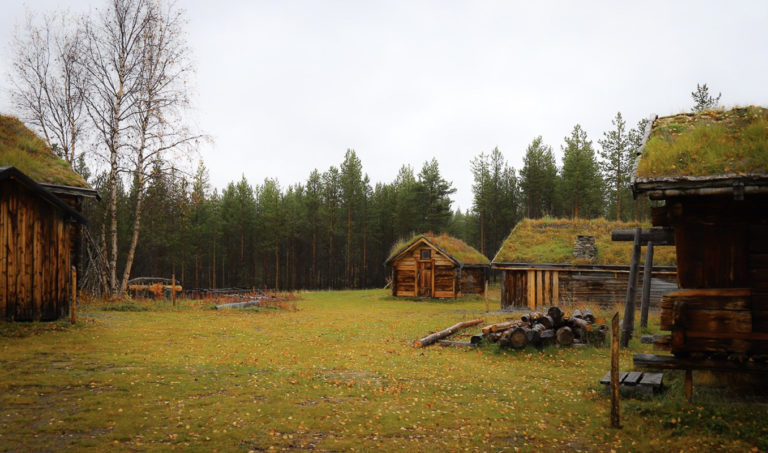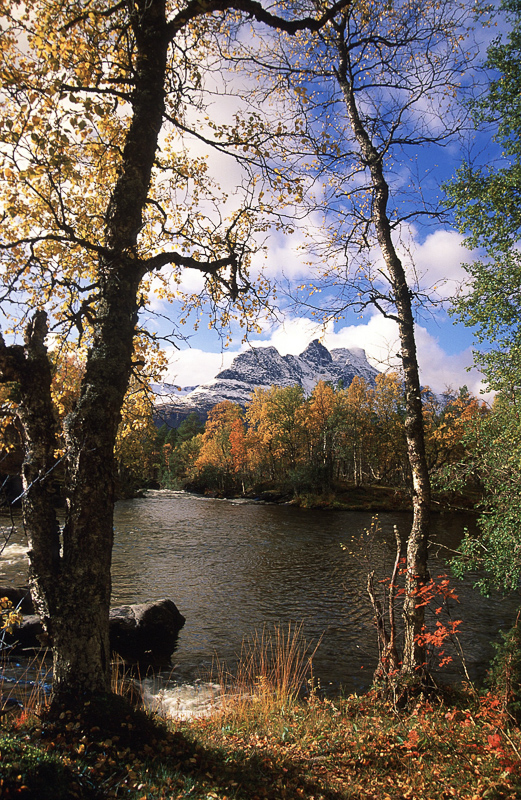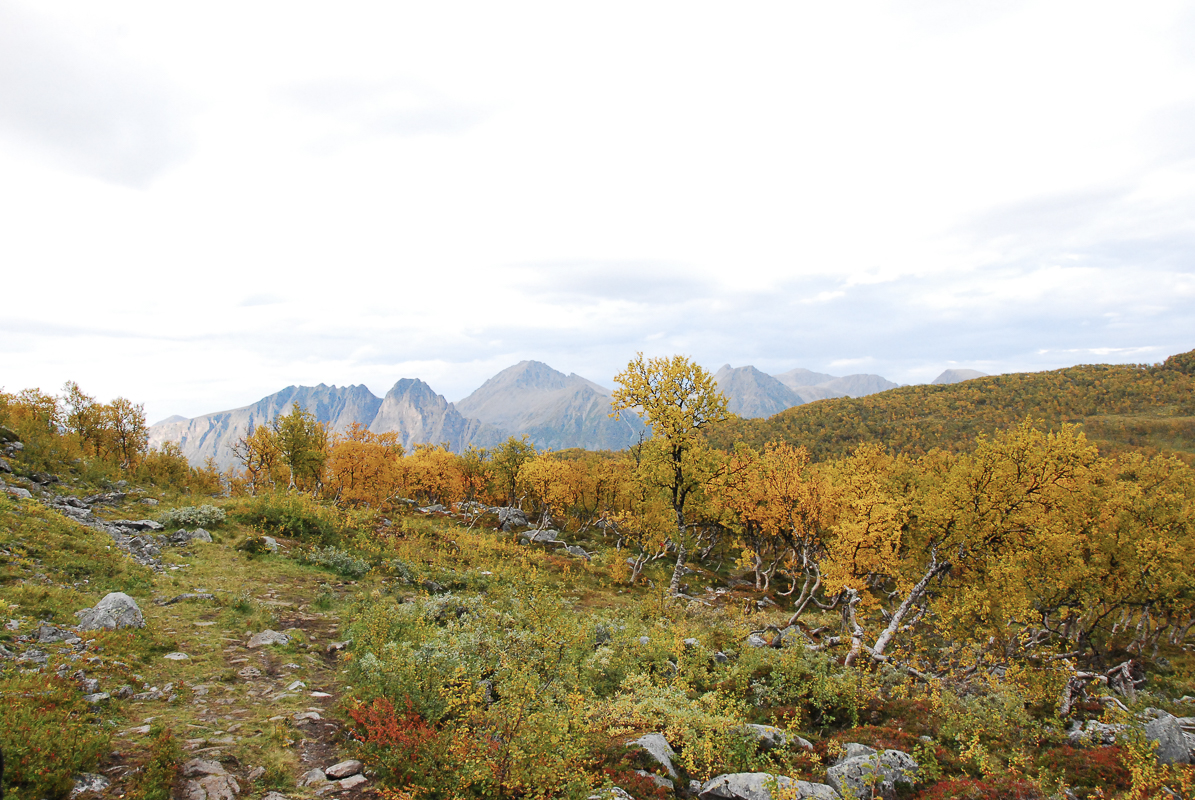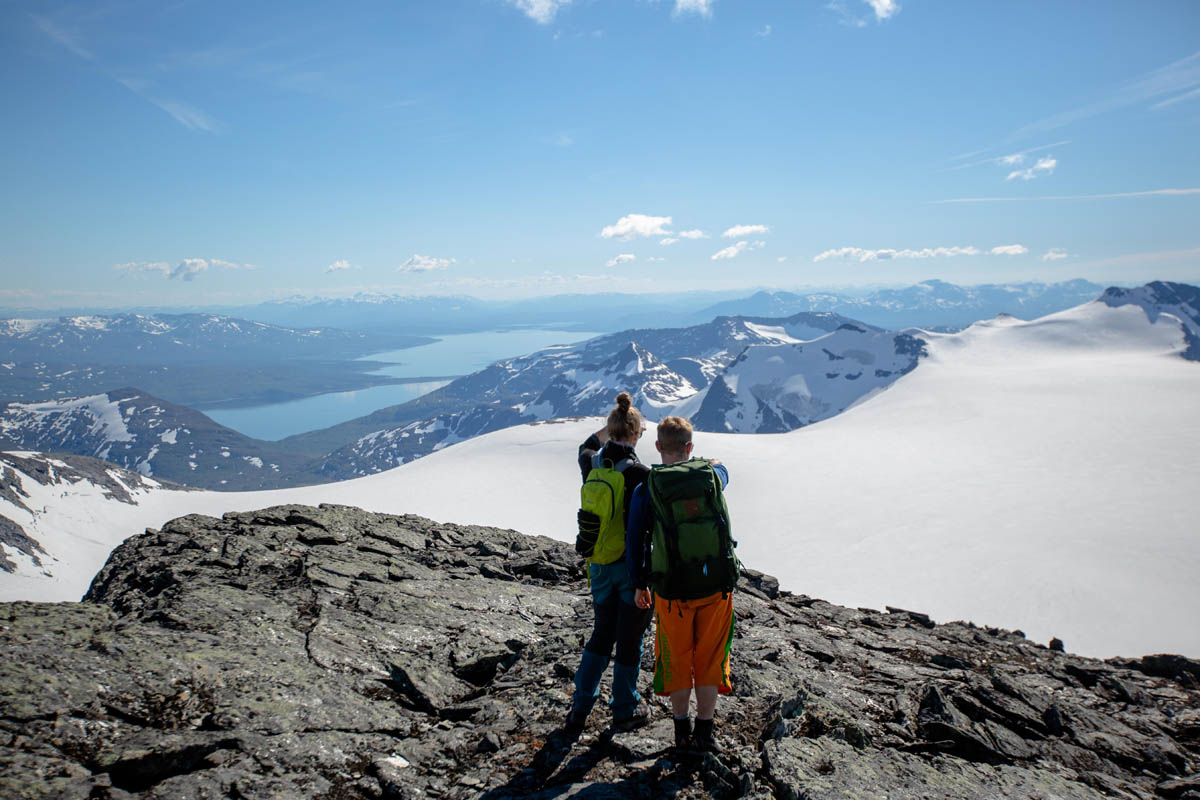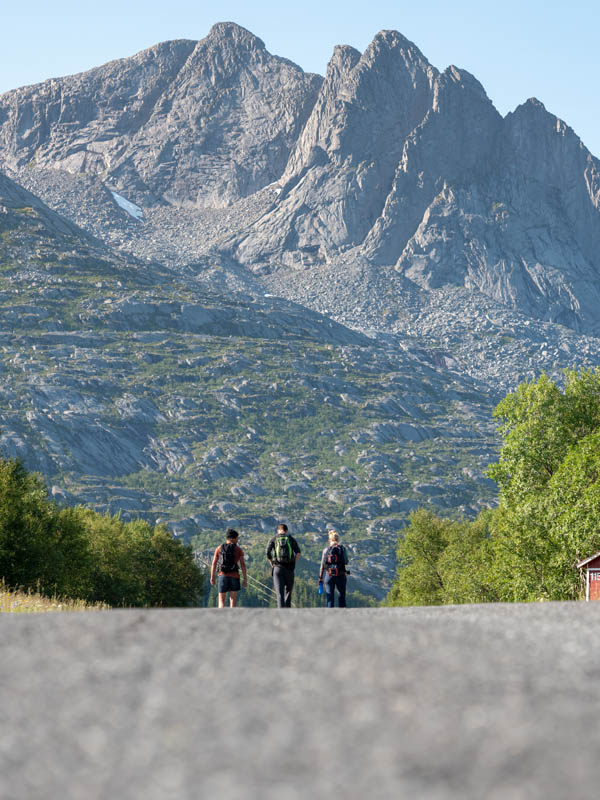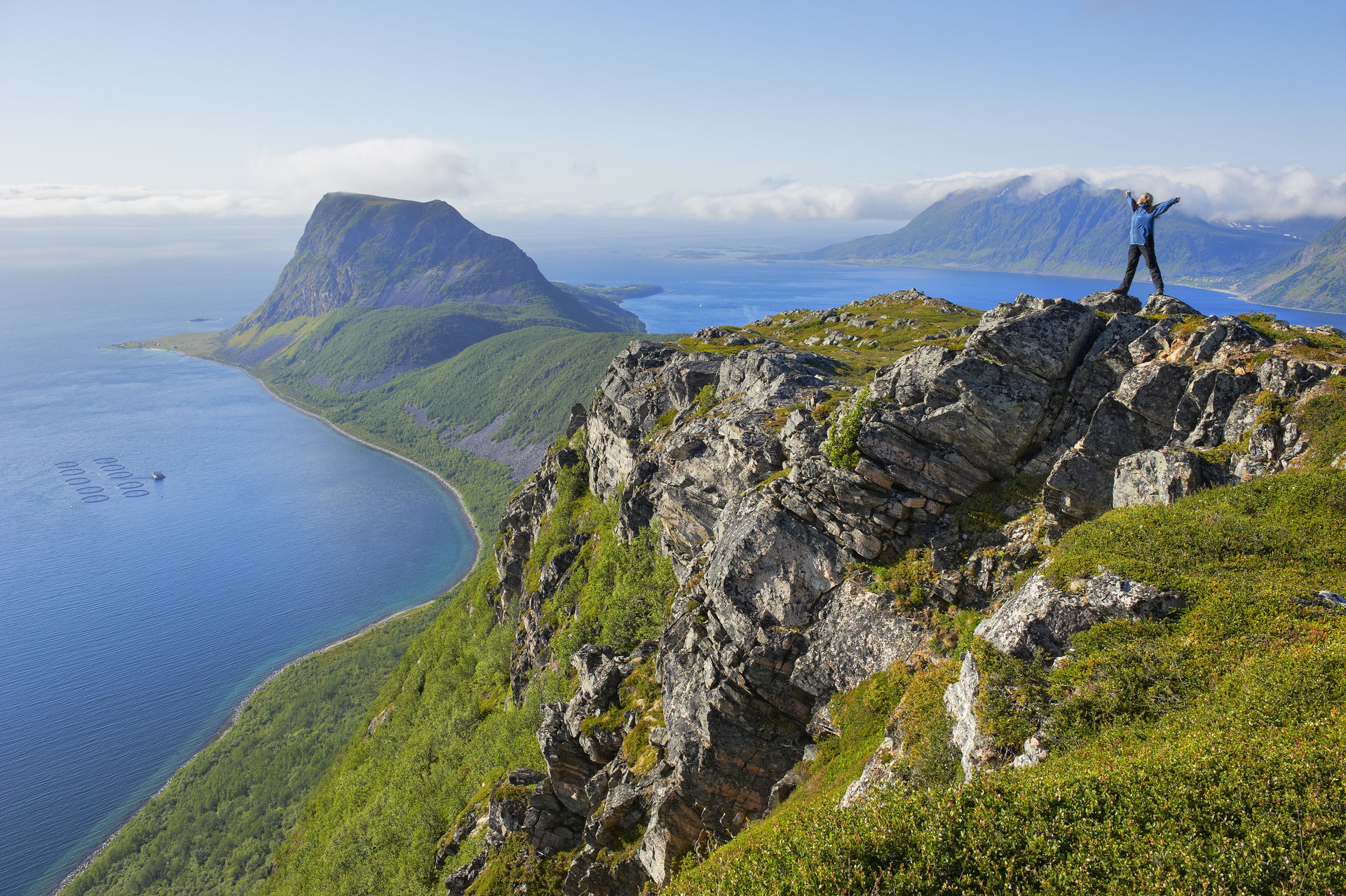At the end of July, the midnight sun dips into the sea at the North Cape, and the darkness of night starts to creep down across Northern Norway. At first there’s just a faint dimming at midnight, but eventually the street lights start to come on, and people start lighting candles. And then someone always says “actually, I think it’s cosy”. But the evenings are still light before the equinox on 21 September. We may get the highest temperatures of the year in early August, but we might also see a dusting of snow on the mountaintops. This melts away quickly though, as winter is still several months away.
August and September are the best months of mountain hiking
Later in August, the flies and midges emerge from the forests, there’s barely a flake of snow to be seen in the mountains, the water in streams and lakes is clean and clear, and the temperatures are very pleasant. Lots of people choose this time of year to hike up the highest mountains, because the clear air ensures the best visibility. In the dog days of August, you’ll be comfy in shorts, while the brisker autumn temperatures of September mean that you should put an extra sweater in your bag, just in case.
Nature bursts into a caleidoscope of colours
August is a month bursting with colour, from the fuchsia of willowherb along the roadsides, the red of rowanberries to the deep green of leaves. At the end of August, Arctic birches turn an orange-tinted ochre yellow, and the blueberry shrubs flame high up on the mountainsides with a fiery red. In September, the colours creep down into the forests, starting with the lemony yellow or pillar-box red of the aspen, followed by the rowan, which moves through a spectrum of deep yellow, luminous orange and deep red, before changing to a surprising purple. Almost at the same time, the birch leaves cloak entire mountainsides in a vivid yellow. We can usually enjoy a couple of weeks of this glorious spectacle, and then a storm will come and blow it all away. That’s nature for you.
The first Northern Lights come out
The first rays of the Northern Lights become visible as early as mid-August, once the nights start to grow darker. Experienced Northern Lights hunters can get some incredible photos of the first Northern Lights, but most people should wait until September. After the equinox of 21 September, your chances of seeing the Northern Lights are at their best, and you can look for them in mild autumn temperatures.
The first Northern Lights start in August
The Berry harvest is long awaited
Everyone up here looks forward to the berry harvest. Some years, the orange cloudberry moors are bursting with berries to be picked in early august, while in other years there’s no harvest at all because of an excess of male flowers or a late spring frost. Blueberries in August are more dependent on the right combination of rain and sun. Lingonberries in September are sour vitamin bombs with a long shelf-life. Crowberries don’t taste of much, but you can make lovely, dark red juice from them. Most Norwegians aren’t too confident with wild mushrooms, so this leaves a bonanza of tasty varieties for mushroom experts in August.
We return to normal life
The new school year starts in the third week of August in Norway, and this is a sociable time of year for many Northern Norwegians. In the university towns, enthusiastic students, with their pockets full of student loans, liven up the beer gardens or get together in brass bands or sewing societies. In short, life gets back to normal. The locals are tired after the summer holidays and are happy to get back into their normal routines. The cultural centres, theatres, orchestras and galleries present their autumn programmes, and old friends meet up in their favourite bars and cafés.
Meta: Late summer and early autumn in Northern Norway is a time of fresh berries, flaming autumn colours and a first glimpse of the Northern Lights.


